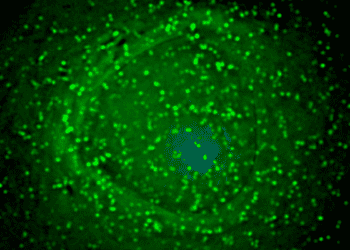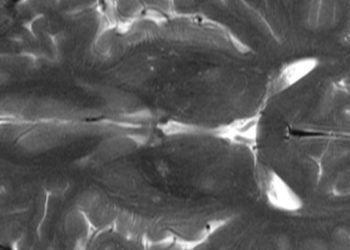Lumbar puncture rates appropriately decline in children with simple febrile seizures
1. This multi-center study found that there was no significant difference in the rates of delayed bacterial meningitis diagnosis before and after the 2011 AAP guidelines to not perform a lumbar puncture (LP) in patients with simple febrile seizures (SFS).
2. Rates of hospitalization, intravenous antibiotic administration, and associated costs also decreased after the 2011 guidelines were published.
Evidence Rating Level: 2 (Good)
Study Rundown: In 2011, the American Academy of Pediatrics (AAP) released new guidelines recommending against routine LP in children with simple febrile seizures. Instead, LP is recommended only if there are signs and symptoms of meningitis, if the child has been pretreated with antibiotics, or if the child is unimmunized or under-immunized. This study sought to assess the impact of these new guidelines on rates of diagnostic testing, antibiotic administration, hospital admission, costs, and rates of bacterial meningitis that were not diagnosed at the index encounter. Overall, when comparing data before 2011 and after 2011, there was a 95% reduction in the number of children who underwent LPs. The number of children undergoing diagnostic imaging or lab work, number of admissions, use of antibiotics, and associated costs also significantly decreased throughout the study period. The major takeaway from this study is that rates of delayed diagnosis of bacterial meningitis did not increase, despite the significant decrease in LPs performed. This strongly supports the 2011 AAP guidelines, and should reassure clinicians that routine LP is not needed in SFS management. While strengthened by its large sample size and prolonged study duration, this study is limited by its reliance on diagnostic coding, which can be inaccurate, as well as its restriction to academic centers.
Click to read the study in PEDIATRICS
Relevant Reading: AAP Updates Guidelines for Evaluating Simple Febrile Seizures in Children
In-Depth [cross-sectional study]: This retrospective cross-sectional study included 142,121 children between the ages of 6-60 months with a first visit to an emergency department for a simple febrile seizure between January 1, 2005, and December 31, 2019. Data were collected from the Pediatric Health Information System database of 49 contributing hospitals, using International Classification of Diseases, 9th and 10th Revision (ICD-9 and ICD-10) diagnosis codes to identify eligible cases. Cases with complex co-diagnoses were excluded. The primary outcome of the study was performance of an LP before and after the release of the 2011 guidelines. Secondary outcomes included demographic data, diagnostic tests performed, antibiotic administration, hospital admission, return ED visits, and diagnoses of bacterial meningitis that were missed on the initial visit. The percentage of patients undergoing LP decreased from 11.6% (95% CI 10.8-12.4%) in 2005, to 0.6% (95% CI 0.5-0.8%; P < .001) in 2019, and this decrease was greatest in children aged 6-12 months. Despite this drastic decrease in the performance of LPs, there were no significant differences in the rates of delayed bacterial meningitis diagnoses, defined as diagnoses within 3 days of the index encounter. Rates of head CT, blood work, urinalysis, admission to hospital, administration of intravenous antibiotics, and associated costs also decreased significantly, while re-visits to the ED within 3 days slightly increased 0.5% in 2005 (95% CI 0.3-0.7%) to 1.4% in 2019 (95% CI 1.2-1.7%; P < .001).
Image: PD
©2021 2 Minute Medicine, Inc. All rights reserved. No works may be reproduced without expressed written consent from 2 Minute Medicine, Inc. Inquire about licensing here. No article should be construed as medical advice and is not intended as such by the authors or by 2 Minute Medicine, Inc.




![The ABCD2 score: Risk of stroke after Transient Ischemic Attack (TIA) [Classics Series]](https://www.2minutemedicine.com/wp-content/uploads/2013/05/web-cover-classics-with-logo-medicine-BW-small-jpg-350x250.jpg)


